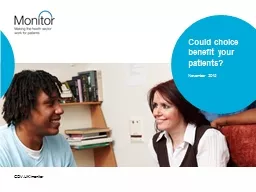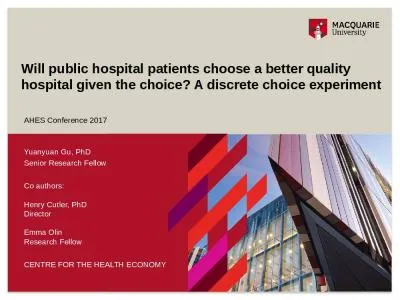PPT-GOV.UK/monitor Could choice
Author : pasty-toler | Published Date : 2020-04-03
benefit your patients November 2015 Index Target audience Using local choice in your area Monitors assessment of choice in adult hearing services Our evidence the
Presentation Embed Code
Download Presentation
Download Presentation The PPT/PDF document " GOV.UK/monitor Could choice " is the property of its rightful owner. Permission is granted to download and print the materials on this website for personal, non-commercial use only, and to display it on your personal computer provided you do not modify the materials and that you retain all copyright notices contained in the materials. By downloading content from our website, you accept the terms of this agreement.
GOV.UK/monitor Could choice : Transcript
Download Rules Of Document
" GOV.UK/monitor Could choice "The content belongs to its owner. You may download and print it for personal use, without modification, and keep all copyright notices. By downloading, you agree to these terms.
Related Documents














